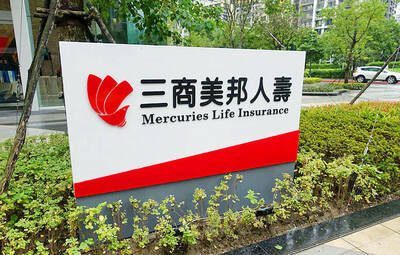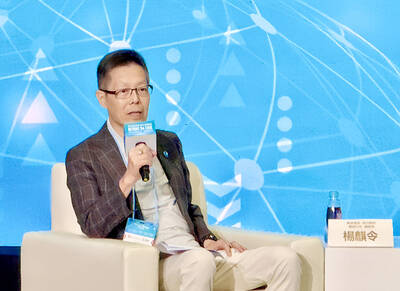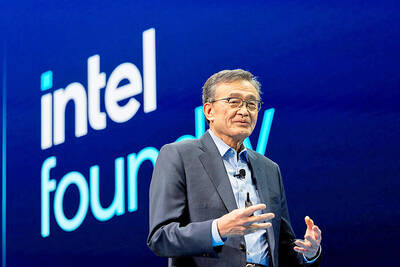“In a few months, I expect to see the stock market much higher than today,” Irving Fisher, the US’ most illustrious economist, predicted in the middle of October 1929.
Two weeks later, the Dow Jones index fell by 23 percent over two days.
Fisher’s renown was swiftly shredded — as is the image of latter-day oracles who defended low central bank interest rates, easy lending and complex financial derivatives blamed for this month’s stocks wreck.
Underpinning the faith of these economic wizards is the doctrine of equilibrium: that the market is a neat, self-balancing machine driven by hard-and-fast “fundamentals.”
It says investors make rational choices on buying or selling stocks according to reliable information about corporate performance, macro-economic news and so on that point to potential risks and profit. A stock thus attains a natural balance based on its true value.
But many researchers say the equilibrium theory falls badly short of explaining the Wall Street crash of 1929, just as it cannot account for this year’s sell-off, or indeed any stock boom-and-bust.
In frenzied times, lack of confidence in the sacred data and primeval fears of unquantifiable risk combine with the innate human survival instinct, creating an effect best described in three words: Sell, sell, sell.
“What has unleashed the crisis is ... an overall lack of trust in what organizations say,” said Thierry Libaert, scientific director of International Crisis Watch, a French think tank.
In times of deep mistrust, a stampede can be triggered by a small event, he said.
Robert Zarader, an economist at Paris-based consultancy Equancy, said that for many investors, the financial sector had become a fearful Pandora’s Box.
They found it impossible to weigh risk, given masses of interlinked transactions that remained to be unraveled, he said.
“Irrationality is playing a big role in the crisis. There’s a feeling that no one’s in charge and the known problems are just the tip of the iceberg,” he said.
Didier Sornette, a physicist by training who is professor of entrepreneurial risk at the Swiss Federal Institute of Technology (ETH), said the imitative “herd” reflex was rooted in Darwinian survival and was not necessarily irrational.
“Biology has made us evolve as survival machines,” he said. “You can get useful information by looking at what your neighbors are doing.”
For instance, students taking a difficult exam may peek over their shoulder to see what their neighbor is writing in the belief that he or she has a better reply, he said.
Flocking among traders, analysts and fund managers also bore responsibility for today’s market woes, creating a dangerous culture of mono-thought, Sornette said.
“In the same way that a husband and wife start to look similar after a while, traders who are constantly in contact with each other and talking about the market start to behave similarly,” he said.
“Analysts and fund managers also tend to herd to a very significant degree, firstly by the way they collect information, but also because it’s better to be wrong with the herd than to be right alone,” he said. “You’d rather be wrong most of the time together, because that way you can say, ‘everyone’s like me.’ If you are wrong alone, then you are killed, you lose your job.”
Another intangible factor noted by experts in behavioral finance is social feedback. Word of mouth, phone calls and e-mail exchanges among small groups of investors who coordinate their actions, sometimes on the basis of mere rumor, can have a domino effect when the market is chronically unstable.
A study published in March by French physicist Jean-Philippe Bouchaud and colleagues at Capital Fund Management in Paris poured cold water on the idea that stocks jump in response to news reports, which under the equilibrium doctrine are a key data stream.
The team looked at news feeds from the Dow Jones and Reuters newswires from August 2004 to August 2006 and compared this with the movements of 893 US stocks.
They found that news items about a stock did not cause prices to become big or volatile. In fact, the opposite occurred: news tended on average to be followed by lower volatility level.
So what caused the big, abrupt movements?
“Volatility is much too high to be explained only by changes in fundamentals,” Bouchaud’s study said. “The volatility process itself is random.”

Mercuries Life Insurance Co (三商美邦人壽) shares surged to a seven-month high this week after local media reported that E.Sun Financial Holding Co (玉山金控) had outbid CTBC Financial Holding Co (中信金控) in the financially strained insurer’s ongoing sale process. Shares of the mid-sized life insurer climbed 5.8 percent this week to NT$6.72, extending a nearly 18 percent rally over the past month, as investors bet on the likelihood of an impending takeover. The final round of bidding closed on Thursday, marking a critical step in the 32-year-old insurer’s search for a buyer after years of struggling to meet capital adequacy requirements. Local media reports

US sports leagues rushed to get in on the multi-billion US dollar bonanza of legalized betting, but the arrest of an National Basketball Association (NBA) coach and player in two sprawling US federal investigations show the potential cost of partnering with the gambling industry. Portland Trail Blazers coach Chauncey Billups, a former Detroit Pistons star and an NBA Hall of Famer, was arrested for his alleged role in rigged illegal poker games that prosecutors say were tied to Mafia crime families. Miami Heat guard Terry Rozier was charged with manipulating his play for the benefit of bettors and former NBA player and

TECHNOLOGICAL RIVALRY: The artificial intelligence chip competition among multiple players would likely intensify over the next two years, a Quanta official said Quanta Computer Inc (廣達), which makes servers and laptops on a contract basis, yesterday said its shipments of artificial intelligence (AI) servers powered by Nvidia Corp’s GB300 chips have increased steadily since last month, should surpass those of the GB200 models this quarter. The production of GB300 servers has gone much more smoothly than that of the GB200, with shipments projected to increase sharply next month, Quanta executive vice president Mike Yang (楊麒令) said on the sidelines of a technology forum in Taipei. While orders for GB200 servers gradually decrease, the production transition between the two server models has been

BETTER THAN EXPECTED: The firm’s Q3 results exceeded its projections, based on ‘the underlying strength of our core markets,’ chief financial officer Dave Zinsner said Intel Corp returned to profitability and gave an upbeat revenue forecast after PC demand grew, suggesting that it is making progress on a long and challenging comeback attempt. In the third quarter, revenue rose 3 percent to US$13.7 billion. The Santa Clara, California-based company posted its first quarterly net income since the end of 2023, with earnings per share of US$0.23, excluding some items. Analysts had estimated sales of US$13.2 billion and earnings per share of US$0.01 on average, according to data compiled by Bloomberg. Fourth-quarter sales would be roughly US$13.3 billion, the company said in a statement on Thursday. Intel shares gained about